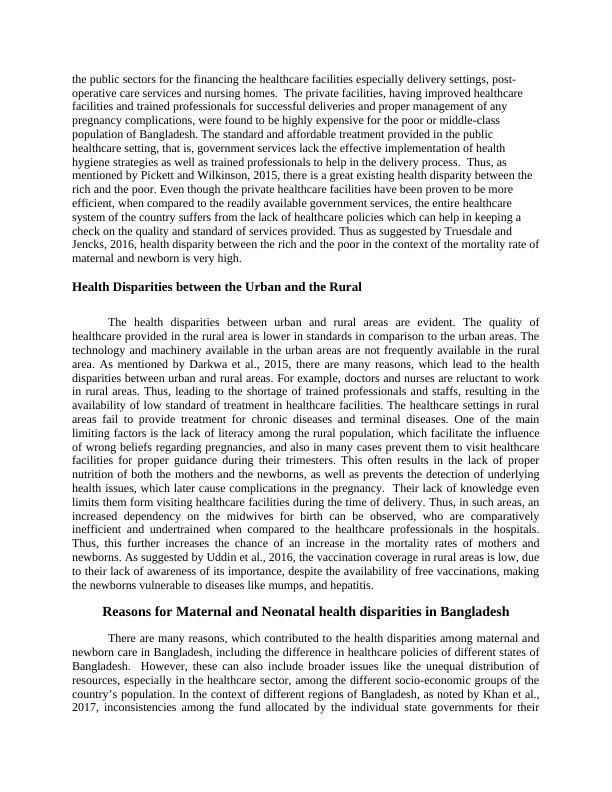Assignment | Maternal and Neonatal Mortality
Why maternal and infant health disparities in Bangladesh? Why is the rate for neonatal mortality nearly double among poor households, at 42 neonatal deaths per 1,000 live births? What action has been taken by the Bangladesh government to achieve this “maternal and newborn” health neonatal mortality health equality among the region? How might I build or extend to accomplish this “maternal and newborn” neonatal mortal equality in Bangladesh?
Added on 2022-10-06
About This Document
I have already prepare the assignment but it needs more work to do. 5 pages with single space excluding appendixes
Assignment | Maternal and Neonatal Mortality
Why maternal and infant health disparities in Bangladesh? Why is the rate for neonatal mortality nearly double among poor households, at 42 neonatal deaths per 1,000 live births? What action has been taken by the Bangladesh government to achieve this “maternal and newborn” health neonatal mortality health equality among the region? How might I build or extend to accomplish this “maternal and newborn” neonatal mortal equality in Bangladesh?
Added on 2022-10-06
End of preview
Want to access all the pages? Upload your documents or become a member.



